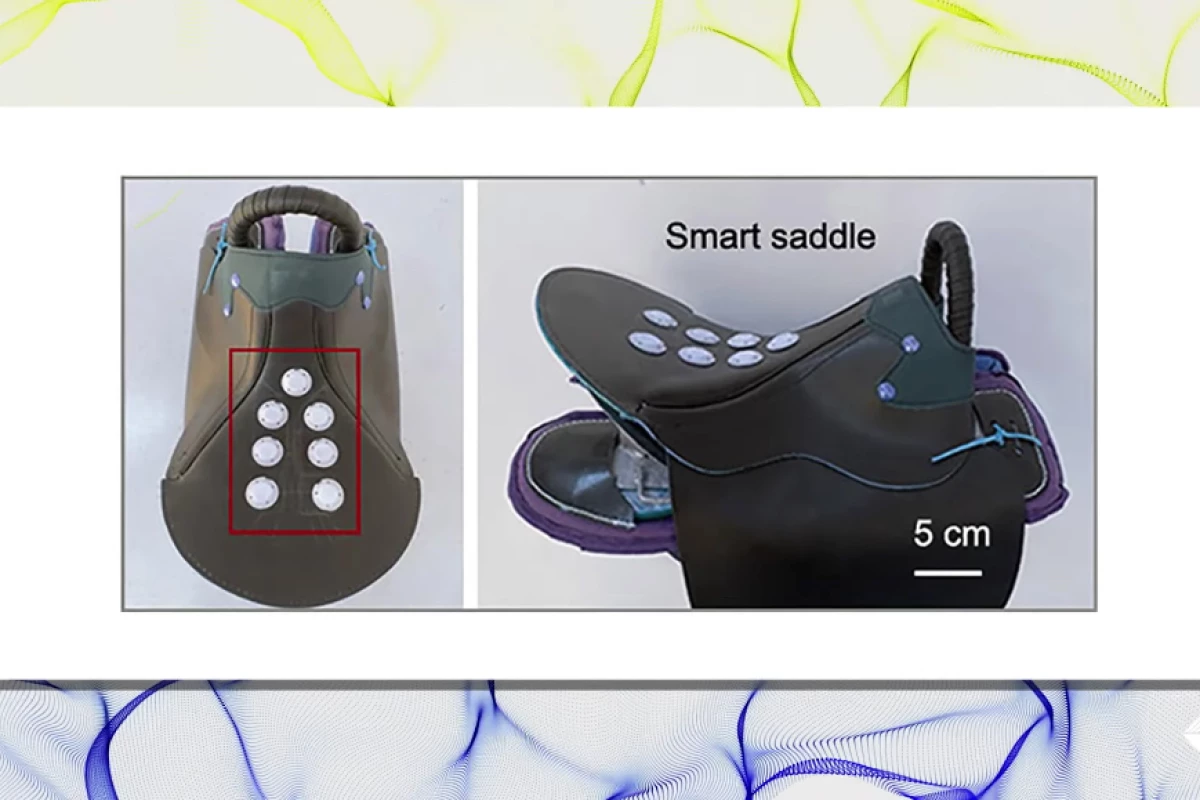When learning to ride horses, equestrians have to become proficient in relaying cues to the animal via subtle changes in their riding posture. And while the horse can't tell them if they're doing so correctly, a new "smart" saddle possibly could.
Presently in functional prototype form, the device is being developed by scientists from the Inner Mongolia University of Technology and the Chinese Academy of Sciences. It consists of a conventional saddle, the top surface of which is equipped with seven small, thin, flexible, disc-shaped pressure sensors.
Each of those self-powered sensors incorporates a triboelectric nanogenerator, or TENG for short.
TENGs take advantage of the triboelectric effect, a phenomenon in which an electrical charge accumulates in one material after it's separated from another material with which it was in contact. It's what's responsible for the static charge that occurs when you're combing your hair.
In the case of the saddle, electrical signals produced by the array of TENGs are capable of indicating if the rider is sitting upright, leaning back, leaning forward or standing up. The system can also wirelessly transmit an alert to other people if it detects that the rider has fallen off the horse. It has a response time of just 16 milliseconds.
A paper on the research was recently published in the journal ACS Nano.
And this isn't the first smart equestrian-related device we've heard about. There have also been sensor-equipped boots that assess the wearer's riding technique, along with a saddle-mounted device which measures the horse's gait, movement symmetry, cadence, speed, stride length and jump trajectory.
Source: American Chemical Society




